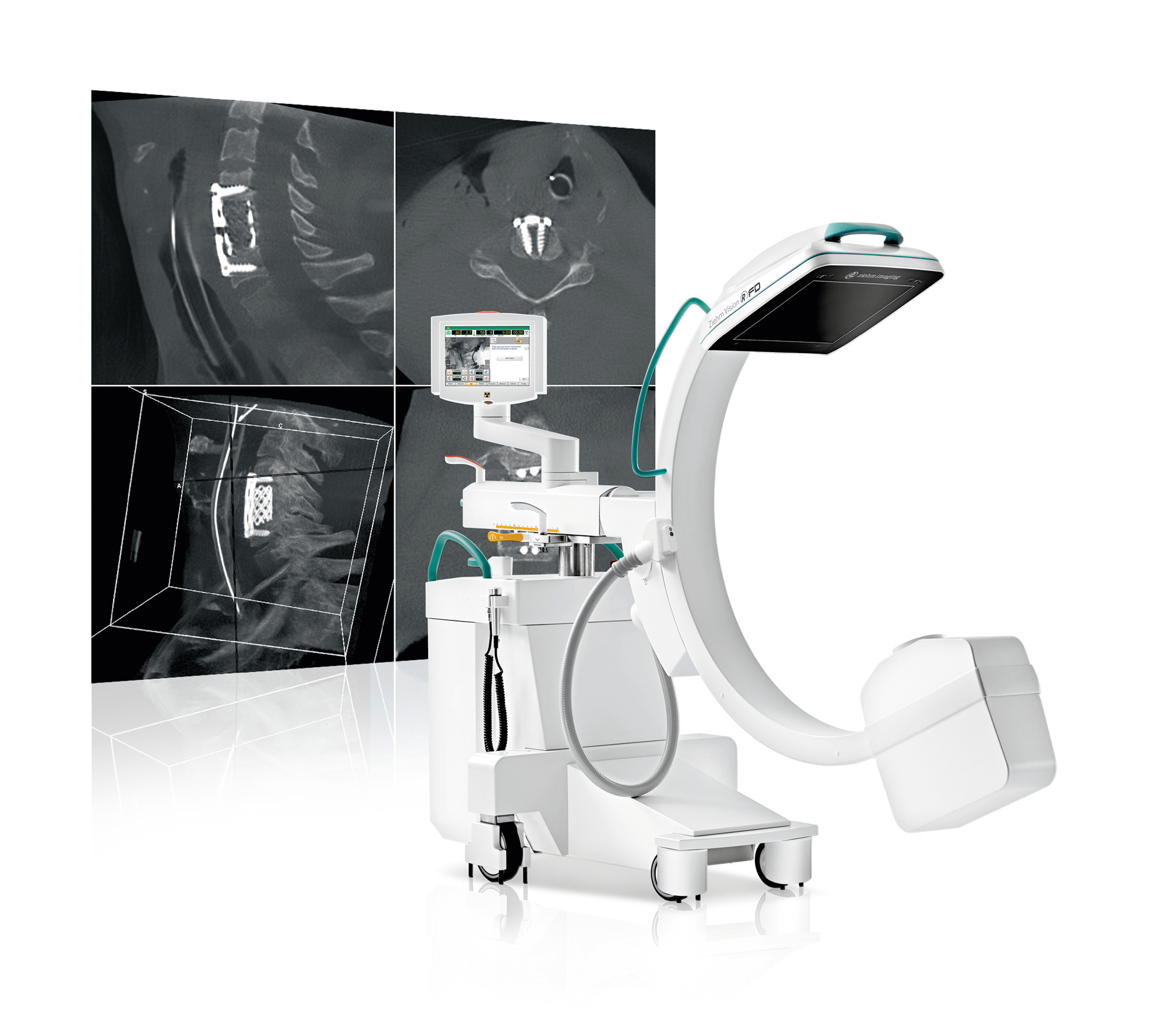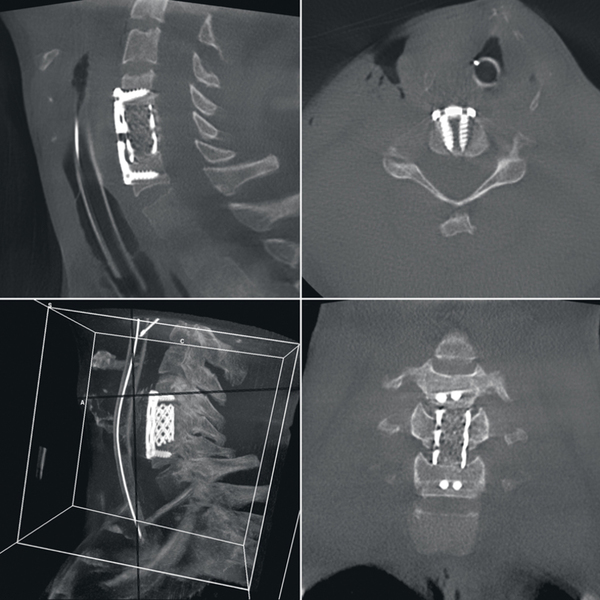Ziehm Vision RFD 3D CMOS
The Vision RFD 3D CMOS is the most technically advanced Mobile C-Arm in the world. With easy 2D and 3D imaging, it is able to perform the most advanced clinical procedures.
3D imaging allows surgeons to use Brainlab, Stryker, Medtronic Stealth (S8), Medacta as well as the Mazor and Globus Robots. The system also allows the surgeon to check screw placements in the operating theatre with a CT image. This gives them a 3D view critical in many surgeries including Spine, Orthopaedic and Pelvic procedures.
Advantages of this system:
- 31x31cm CMOS FD Detector,
- 25kW generator,
- 20cm3 3D volume size,
- 100µm Pixel size for greater resolution
- ZIR software for reduced metal artifacts,
- Spin plus shift 3D imaging technique (Patented technology that allows an equivalent to 1800 rotation with a standard size C-Arm.)
All this combine to make this very small C-Arm's image quality comparable to interoperative CT's.
Additionally this system can be enhanced with the Hybrid Edition (see Vision RFD Hybrid) to allow high level vascular.
This is a must have system for high level trauma hospitals.
It is capable of:
- High level Vascular and Cardiac surgery.
- High level 3D imaging for Pelvic, Spinal and Orthopaedic trauma
- Conventional 2D imaging for regular surgery.
-
 CMOS Flat Panel
CMOS Flat Panel -
 3D Imaging
3D Imaging -
 Flat Panel
Flat Panel -
 ZAIP (Ziehm Adaptive Image Processing)
ZAIP (Ziehm Adaptive Image Processing) -
 Liquid Cooling
Liquid Cooling -
 ODDC (Object Detected Dose Control)
ODDC (Object Detected Dose Control) -
 Smart Eye
Smart Eye -
 Soft Tissue Software
Soft Tissue Software -
 Shaky Man Software
Shaky Man Software
Image quality and efficiency are the most important but also challenging factors in daily clinical routine. In comparison with conventional C-arms, the latest flat-panel technology CMOS achieves higher spatial resolution due to smaller pixel sizes combined with lower noise levels and a higher read-out speed at full resolution. True resolution, especially in the magnification modes, makes interpolation unnecessary. CMOS technology therefore enables improved overall efficiency at the same time as lowering the output dose.
The ability to create a CT image while the patient is still on the table is essential in a modern operating theatre. Allowing accurate navigation and anatomy visualization can dramatically reduce revision surgery. In a modern operating theatre the checking of screw placement whilst the patient is on the table should be a compulsory for all major surgery. Including Spine, Orthopaedic and Pelvic work. .
Ziehm seeing the benefits of flat panel detectors integrated with C-Arms, they were the first to develop “FD” mobile C-Arms over 8 years ago. Now having had years of experience with this technology, Ziehm have been able to push the boundaries of superb image quality combined with low dose. Their results are simply unparalleled.
Ziehms Flat panel technology gives you:
Larger free space (up to 90cm)
Better Image quality (16,000+ grey levels)
Lower Dose (80% quantum efficiency)
No “S” distortion
Image quality lasts for the life time of the system
Seamless integration (easy placement and movement of FD detector)
ZAIP enhances the image quality of all C-arms with flat-panel detector. ZAIP uses hardware-based filters and the latest algorithms for noise filtering, edge enhancement and dose optimization to achieve best results in intraoperative imaging.
With the liquid continuously cooling your x-ray generator, you system will never shut down or overheat. Giving you the confidence during critical surgery.
A matrix of 256 measurement cells guarantees an optimal adaption to the patient‘s position making positioning the system a breeze. The Real-time motion detection provides superb image quality even if motion is detected. The automatic control of the pulse frequency reduces the dose dramatically with even the most inexperienced operator.
This unique ergonomically designed touch screen interface (with its own monitor), allows the operator to have complete control from the C-Arm. Much like a smart phone, this touch screen device makes the operation of this system simple and intuitive and reduces unnecessary movement in the operating theatre.
With Soft tissue activated, the system will automatically adjust the factors of the system to visualise the skin edge and ignore the dense part of the anatomy.
When activated the system reduces the blurring effect cause through patient or system movement.


